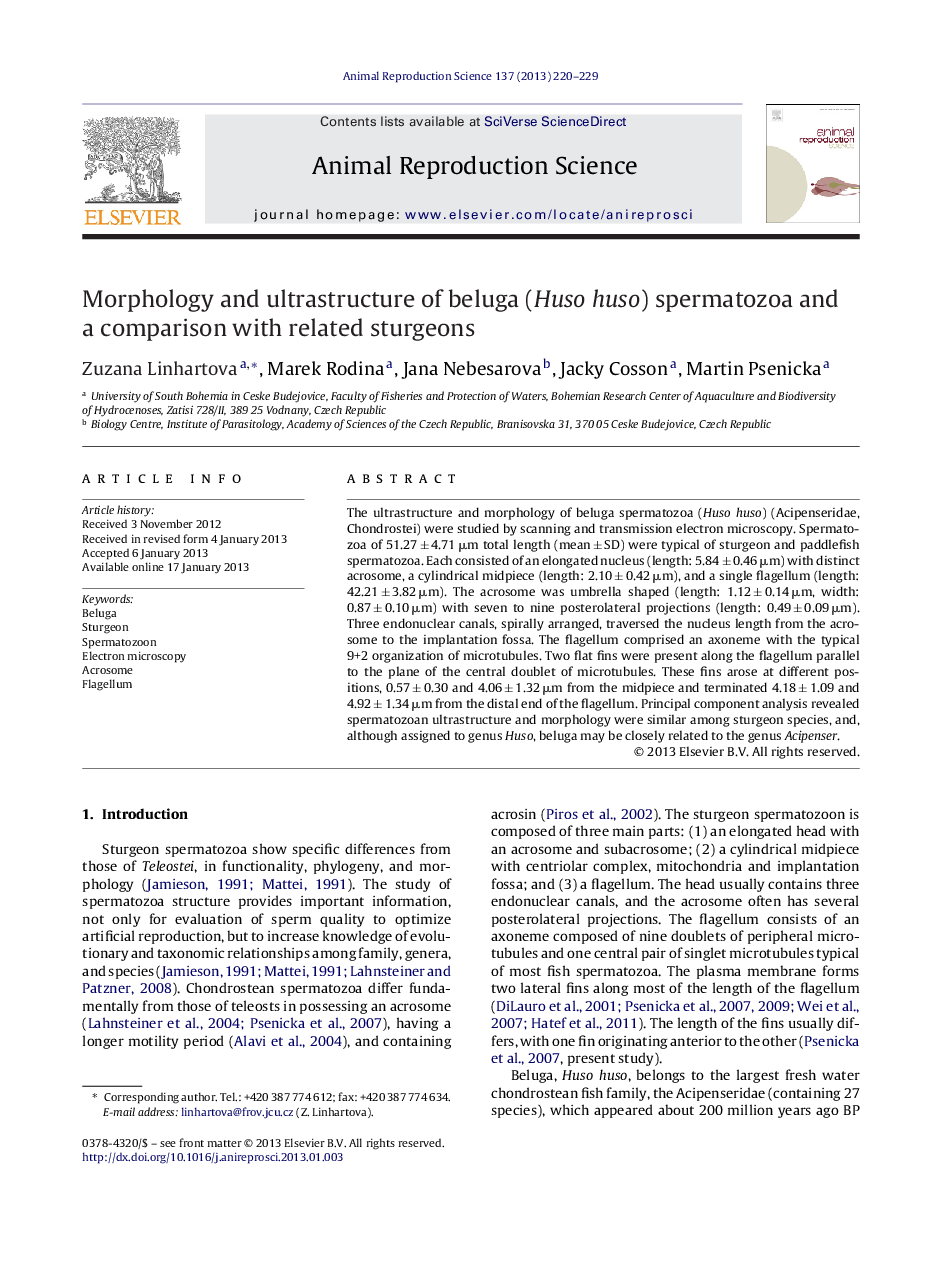| Article ID | Journal | Published Year | Pages | File Type |
|---|---|---|---|---|
| 2073083 | Animal Reproduction Science | 2013 | 10 Pages |
The ultrastructure and morphology of beluga spermatozoa (Huso huso) (Acipenseridae, Chondrostei) were studied by scanning and transmission electron microscopy. Spermatozoa of 51.27 ± 4.71 μm total length (mean ± SD) were typical of sturgeon and paddlefish spermatozoa. Each consisted of an elongated nucleus (length: 5.84 ± 0.46 μm) with distinct acrosome, a cylindrical midpiece (length: 2.10 ± 0.42 μm), and a single flagellum (length: 42.21 ± 3.82 μm). The acrosome was umbrella shaped (length: 1.12 ± 0.14 μm, width: 0.87 ± 0.10 μm) with seven to nine posterolateral projections (length: 0.49 ± 0.09 μm). Three endonuclear canals, spirally arranged, traversed the nucleus length from the acrosome to the implantation fossa. The flagellum comprised an axoneme with the typical 9+2 organization of microtubules. Two flat fins were present along the flagellum parallel to the plane of the central doublet of microtubules. These fins arose at different positions, 0.57 ± 0.30 and 4.06 ± 1.32 μm from the midpiece and terminated 4.18 ± 1.09 and 4.92 ± 1.34 μm from the distal end of the flagellum. Principal component analysis revealed spermatozoan ultrastructure and morphology were similar among sturgeon species, and, although assigned to genus Huso, beluga may be closely related to the genus Acipenser.
